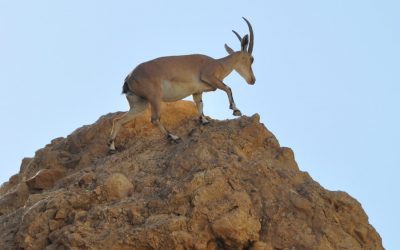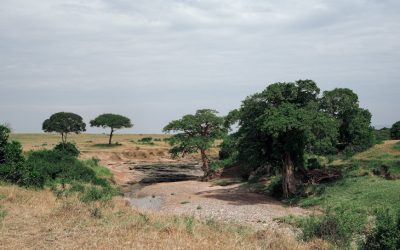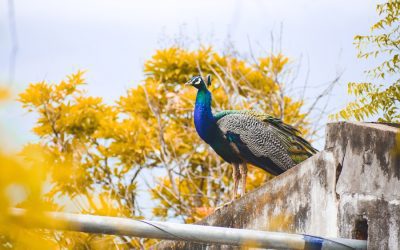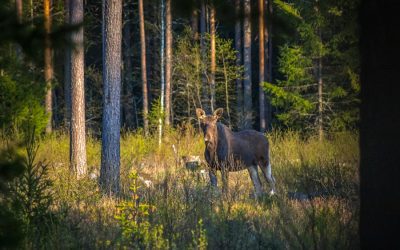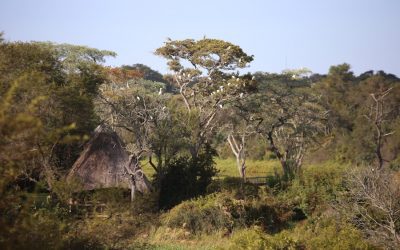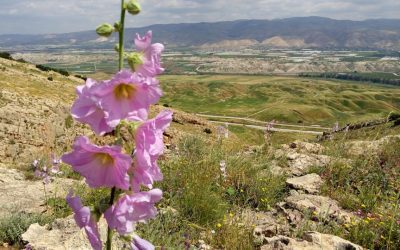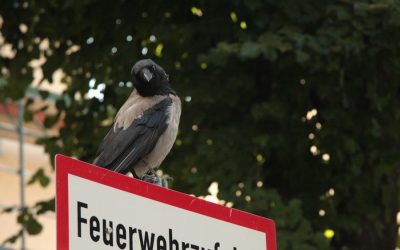Explore the World Through Geography, Natural Resources & Daily History
Clear, reliable and engaging guides that help you understand our planet — from UK geography education to global natural resources and On This Day history events.
Explore, discover, and learn about the wonders of our world! At Earth Site, we’re passionate about bringing geography, history, and science to life for curious minds of all ages. Whether you’re delving into historical events, uncovering the mysteries of the natural world, or seeking interactive resources, you’re in the right place.
Here, you can uncover the stories behind historical events, explore the natural wonders of our planet, and gain valuable insights into how the Earth’s systems shape our daily lives. From the towering peaks of mountain ranges to the far-reaching impacts of human innovation, we aim to make every topic both engaging and informative.
Start your journey of discovery with us today, and let’s make learning an adventure!
What We Cover
Earth Site brings together engaging and accessible educational content designed to help you understand the world, its history, and its natural systems.
🌍 Geography Education (UK & Worldwide)
We publish clear, easy-to-understand geography resources for students, teachers and curious learners. Our guides support geography education in the UK and cover physical geography, climate, ecosystems, population, and global development.
⛏️ Natural Resources & Environmental Geography
Explore detailed country profiles covering natural resources, mining, energy, geology and global environmental challenges. We show how nations manage minerals, water, land and ecosystems, and why these resources matter.
📅 On This Day in History
Every day has a story. Our On This Day history series features major events, anniversaries, traditions, and cultural milestones from around the world — with timelines, context, and fun facts.
TIMELINE
Exploring the Wildlife of Djibouti: The Flora and Fauna
Djibouti, a small yet strategically located nation in the Horn of Africa, is often overshadowed by its more prominent neighbours. However, this arid country boasts a remarkable array of wildlife and ecosystems that are both unique and diverse. The geographical positioning of Djibouti, bordered by the Red Sea and the Gulf of Aden, creates a rich tapestry of habitats ranging from coastal areas to volcanic landscapes and arid deserts. This variety supports a plethora of species, some of which are endemic to the region, making Djibouti a hidden gem for wildlife enthusiasts and researchers alike. The wildlife of Djibouti is not only significant for its biodiversity but also for its cultural and ecological importance. The interplay between the harsh climate and the unique geological features has led to the evolution of species that have adapted to survive in extreme conditions. From the rugged mountains of the Goda Mountains to the saline lakes of Lake Assal, Djibouti’s wildlife reflects the resilience of nature. This article delves into the unique flora and fauna of Djibouti, conservation efforts, and opportunities for ecotourism, highlighting the importance of preserving this natural heritage. Summary Djibouti is home to a diverse range of wildlife, making it a unique destination for nature enthusiasts. The flora of Djibouti includes rare and endemic species adapted to the country’s arid climate. Djibouti’s fauna is diverse, with species such as the endangered Grevy’s zebra and the charismatic Somali wild ass. Conservation efforts in Djibouti aim to protect and preserve the country’s rich biodiversity. Birdwatching in Djibouti offers the opportunity to spot a variety of migratory and resident bird species in diverse...
Exploring the Flora and Fauna of Burkina Faso
Burkina Faso, a landlocked country in West Africa, is often overlooked in discussions about biodiversity, yet it boasts a rich tapestry of ecosystems that are home to a remarkable variety of flora and fauna. The nation’s geographical position, straddling the Sahel and savannah regions, creates a unique environment that supports diverse habitats ranging from grasslands to woodlands. This ecological diversity is not only vital for the survival of numerous species but also plays a crucial role in the livelihoods of local communities who depend on these natural resources for their sustenance and cultural practices. The biodiversity of Burkina Faso is shaped by its climatic conditions, which include a distinct wet and dry season. The annual rainfall varies significantly across the country, influencing the types of vegetation and animal life that can thrive in different regions. The interplay between human activity and natural ecosystems further complicates this landscape, as agriculture, deforestation, and urbanisation exert pressure on wildlife and plant species. Understanding the intricate relationships within this biodiversity is essential for fostering sustainable practices that can protect these invaluable resources for future generations. Summary Burkina Faso is home to a rich and diverse range of flora and fauna, making it a hotspot for biodiversity in West Africa. The unique flora of Burkina Faso includes a variety of indigenous plants, such as the iconic baobab tree and the shea tree, which are of great cultural and economic importance. The diverse fauna of Burkina Faso includes a wide range of mammals, birds, reptiles, and insects, with species such as elephants, hippos, and crocodiles found in the country’s national parks and reserves. Conservation efforts...
Exploring the Wildlife of Bonaire, Sint Eustatius and Saba
Bonaire, Sint Eustatius, and Saba, collectively known as the Caribbean Netherlands, are three small islands that boast a rich tapestry of natural beauty, cultural heritage, and ecological significance. Located in the Leeward Antilles, these islands are part of the Kingdom of the Netherlands and are renowned for their stunning landscapes, vibrant marine ecosystems, and unique wildlife. Each island possesses its own distinct character and charm, making them a treasure trove for nature enthusiasts, adventure seekers, and those looking to immerse themselves in the tranquillity of island life. Bonaire is celebrated for its exceptional diving opportunities and pristine coral reefs, while Sint Eustatius, often referred to as Statia, is known for its historical significance and lush landscapes. Saba, the smallest of the three, is characterised by its dramatic volcanic terrain and rich biodiversity. Together, these islands offer a unique blend of experiences that highlight the importance of conservation and sustainable tourism in preserving their natural wonders. As we delve deeper into the diverse ecosystems and wildlife that inhabit these islands, we will uncover the intricate relationships between their inhabitants and the ongoing efforts to protect these precious environments. Summary Bonaire, Sint Eustatius and Saba are three unique islands in the Caribbean Netherlands, each offering diverse wildlife and natural beauty. Bonaire’s waters are home to a rich and diverse marine life, making it a paradise for snorkelers and divers. Sint Eustatius is a haven for bird watchers, with over 200 species of birds to be spotted on the island. Saba is known for its unique wildlife, including the Saba Anole lizard and the Saba racer snake, found nowhere else in the...
Exploring the Flora and Fauna of Sweden
Sweden is a country characterised by its remarkable diversity of ecosystems, which range from coastal areas and archipelagos to vast forests and mountainous regions. The geographical layout of Sweden, with its extensive coastline along the Baltic Sea and the Gulf of Bothnia, creates a unique interplay between land and water. This coastal environment supports a variety of habitats, including sandy beaches, rocky shores, and rich marine ecosystems. The archipelago of Stockholm, for instance, comprises over 30,000 islands, each hosting distinct flora and fauna adapted to the varying conditions of salinity and exposure to the elements. Moving inland, Sweden’s landscape transitions into expansive boreal forests, which cover approximately 60% of the country. These forests are predominantly composed of coniferous trees such as pine, spruce, and fir, interspersed with deciduous species like birch and aspen. The boreal forest is not only a vital carbon sink but also a habitat for numerous species. The undergrowth is rich with mosses, lichens, and a variety of shrubs that provide food and shelter for wildlife. In the northern regions, the landscape shifts to tundra, where harsh climatic conditions limit vegetation to hardy species like reindeer lichen and dwarf shrubs. This ecological diversity is crucial for maintaining the balance of Sweden’s natural environment and supports a wide array of wildlife. Summary Sweden’s diverse ecosystems include forests, mountains, wetlands, and coastal areas, providing a rich variety of habitats for flora and fauna. Unique species such as the European brown bear, moose, and Arctic fox can be found in Sweden, along with a wide range of plant species including the rare twinflower and the Lapland buttercup. Sweden’s national...
Exploring the Rich Flora and Fauna of Mozambique
Mozambique, a country located on the southeastern coast of Africa, is renowned for its rich and diverse biodiversity. Spanning over 800,000 square kilometres, the nation boasts a variety of ecosystems, including coastal mangroves, savannahs, wetlands, and mountainous regions. This ecological diversity is home to an array of flora and fauna, some of which are endemic to the region. The country’s unique geographical position, bordered by the Indian Ocean to the east and featuring a range of climatic zones, contributes significantly to its biological wealth. Mozambique’s biodiversity is not only vital for the environment but also plays a crucial role in the livelihoods of local communities who depend on natural resources for their sustenance. The intricate web of life in Mozambique is a testament to the evolutionary processes that have shaped the region over millennia. The country is part of the Eastern African biodiversity hotspot, which is characterised by high levels of endemism and species richness. This hotspot includes various ecosystems that support a multitude of species, many of which are yet to be studied thoroughly. The importance of Mozambique’s biodiversity extends beyond its borders; it contributes to global ecological health and offers potential benefits in terms of medicine, agriculture, and climate resilience. As such, understanding and preserving this biodiversity is essential for both local and global communities. Summary Mozambique is home to a rich and diverse range of plant and animal species, making it a hotspot for biodiversity. The country boasts a number of unique plant species, including the iconic baobab tree and the delicate orchid species found in the region. Mozambique’s wildlife is incredibly diverse, with a wide...
Exploring the Rich Flora and Fauna of Iran
Iran, a country steeped in history and culture, is also a treasure trove of biodiversity. Spanning approximately 1.65 million square kilometres, it is home to a remarkable array of ecosystems, flora, and fauna. The geographical diversity of Iran, which includes mountains, deserts, forests, and coastal areas, contributes significantly to its rich biological heritage. This unique combination of climatic conditions and topographical variations has resulted in a wide range of habitats that support numerous species, many of which are endemic to the region. The significance of Iran’s biodiversity extends beyond its borders; it plays a crucial role in global ecological health. The country is situated at the crossroads of several biogeographical regions, including the Mediterranean, Central Asian, and Arabian zones. This strategic location has facilitated the mixing of various species and ecosystems, making Iran a vital area for conservation efforts. Understanding and preserving this biodiversity is essential not only for the ecological balance within Iran but also for the broader environmental stability of the planet. Summary Iran is home to a rich and diverse range of ecosystems, flora, and fauna, making it a hotspot for biodiversity. The unique flora of Iran includes a wide variety of plant species, many of which are endemic to the region. Iran’s fascinating fauna includes iconic species such as the Persian leopard, Asiatic cheetah, and Iranian wild ass. Conservation efforts in Iran are focused on protecting and preserving the country’s rich biodiversity, with a particular emphasis on endangered species. Iran’s national parks and wildlife reserves offer opportunities for ecotourism, providing visitors with a chance to experience the country’s natural beauty and diverse wildlife. Diverse Ecosystems...
Discovering the Rich Flora and Fauna of Germany
Germany, a nation renowned for its rich cultural heritage and historical significance, is equally remarkable for its biodiversity. Spanning a variety of landscapes, from the rugged peaks of the Alps to the serene shores of the North Sea, Germany is home to an impressive array of flora and fauna. The country’s geographical diversity, coupled with its temperate climate, creates a mosaic of ecosystems that support a multitude of species. This intricate web of life is not only vital for ecological balance but also plays a crucial role in the cultural and economic fabric of the nation. The importance of biodiversity in Germany cannot be overstated. It contributes to ecosystem services such as pollination, water purification, and climate regulation, which are essential for human survival and well-being. Furthermore, Germany’s commitment to environmental sustainability and conservation has led to significant efforts aimed at preserving its natural heritage. As one of the leading nations in Europe regarding environmental policy, Germany has implemented various strategies to protect its biodiversity, ensuring that future generations can enjoy the splendour of its natural landscapes and wildlife. Summary Germany boasts a rich biodiversity with diverse ecosystems and iconic wildlife. The country is home to a variety of endangered species, prompting conservation efforts. Germany’s botanical wonders and national parks offer unique opportunities for nature exploration. Wildlife watching and nature tours are popular activities, with a focus on responsible exploration. Visitors can immerse themselves in Germany’s natural beauty while supporting conservation efforts. Exploring Germany’s Diverse Ecosystems Germany’s ecosystems are as varied as its landscapes, encompassing forests, wetlands, grasslands, and coastal regions. The country boasts approximately 11% forest cover, with...
Exploring the Rich Flora and Fauna of Benin
Benin, a small West African nation bordered by Togo, Nigeria, and Burkina Faso, is often overlooked in discussions about biodiversity. However, this country is a hidden gem, boasting a rich tapestry of ecosystems that support a remarkable variety of plant and animal life. The geographical diversity of Benin, which includes coastal areas, savannahs, and forests, creates a unique environment that fosters an array of species. The nation is home to over 6,000 plant species, 700 bird species, and numerous mammals, reptiles, and amphibians. This biodiversity is not only vital for the ecological balance but also plays a significant role in the cultural and economic fabric of the country. The significance of Benin’s biodiversity extends beyond its borders. As part of the West African ecological zone, the preservation of its unique species and habitats is crucial for regional environmental health. The intricate relationships between various organisms contribute to ecosystem services such as pollination, water purification, and soil fertility. Furthermore, the cultural heritage of Benin is deeply intertwined with its natural environment, as many communities rely on local flora and fauna for their livelihoods, traditional practices, and spiritual beliefs. Understanding and appreciating this biodiversity is essential for fostering sustainable development and ensuring the well-being of future generations. Summary Benin is home to a rich and diverse range of flora and fauna, making it a hotspot for biodiversity in West Africa. The diverse ecosystems of Benin include savannas, forests, wetlands, and coastal areas, each supporting a unique array of plant and animal species. Benin’s unique flora includes the iconic baobab tree, as well as a variety of medicinal plants and rare orchids...
Exploring Belgium’s Flora and Fauna
Belgium, a small yet remarkably diverse country located in Western Europe, boasts a rich tapestry of biodiversity that reflects its varied landscapes and climates. Despite its modest size, Belgium is home to an impressive array of flora and fauna, shaped by its unique geographical position at the crossroads of several major European biogeographical regions. The country’s biodiversity is not only a testament to its natural heritage but also plays a crucial role in maintaining ecological balance and supporting human livelihoods. The intricate web of life in Belgium encompasses a multitude of ecosystems, from coastal dunes and wetlands to dense forests and rolling hills. This diversity is further enhanced by the presence of various microclimates, which allow for the flourishing of numerous species. However, the richness of Belgium’s biodiversity is under constant threat from human activities, climate change, and habitat destruction. Understanding and appreciating this biodiversity is essential for fostering a sense of stewardship among the population and ensuring the preservation of these natural treasures for future generations. Summary Belgium is home to a rich and diverse biodiversity, with a wide variety of flora and fauna. The diverse flora of Belgium includes over 1,800 species of vascular plants, with a significant portion being native to the region. The rich fauna of Belgium includes a variety of mammals, birds, reptiles, amphibians, and insects, many of which are protected species. Threats to Belgium’s biodiversity include habitat loss, pollution, climate change, and invasive species. Conservation efforts in Belgium focus on habitat restoration, species protection, and sustainable management of natural resources. The Diverse Flora of Belgium Belgium’s flora is characterised by a remarkable variety...
Exploring Malaysia’s Rich Flora and Fauna
Malaysia is a country renowned for its extraordinary biodiversity, which is a testament to its unique geographical position and varied climatic conditions. Situated in Southeast Asia, Malaysia encompasses a range of ecosystems, from coastal mangroves and coral reefs to lush rainforests and mountainous terrains. This rich tapestry of habitats supports an astonishing array of plant and animal species, many of which are endemic to the region. The country is home to approximately 20% of the world’s total species, making it one of the most biologically diverse nations on the planet. The significance of Malaysia’s biodiversity extends beyond mere numbers; it plays a crucial role in maintaining ecological balance and supporting the livelihoods of millions. The forests, wetlands, and marine environments provide essential services such as carbon sequestration, water purification, and soil fertility. Furthermore, the cultural heritage of Malaysia is deeply intertwined with its natural environment, as indigenous communities have relied on these ecosystems for sustenance and traditional practices for centuries. Understanding and preserving this biodiversity is not only vital for environmental health but also for the socio-economic well-being of the nation. Summary Malaysia is home to a rich and diverse range of flora and fauna, making it a hotspot for biodiversity. The flora of Malaysia includes over 15,000 species of flowering plants, with a high level of endemism. Malaysia’s fauna is equally diverse, with iconic species such as the Malayan tiger, orangutans, and pygmy elephants. Threats to Malaysia’s biodiversity include deforestation, habitat loss, poaching, and climate change. Conservation efforts in Malaysia include the establishment of protected areas, wildlife corridors, and community-based conservation initiatives. The Diverse Flora of Malaysia Malaysia’s...
Exploring Iraq’s Rich Flora and Fauna
Iraq, a country often associated with its tumultuous history and geopolitical significance, is also home to a rich tapestry of biodiversity that is frequently overlooked. Nestled in the heart of the Middle East, Iraq’s varied landscapes range from the fertile plains of the Tigris and Euphrates rivers to the rugged mountains of the north and the arid deserts of the south. This geographical diversity creates a unique environment that supports a wide array of plant and animal species, many of which are endemic to the region. The intricate ecosystems found within Iraq are not only vital for the survival of numerous species but also play a crucial role in the cultural and economic fabric of the nation. The significance of Iraq’s biodiversity extends beyond its borders, contributing to global ecological health. The country is situated at a crossroads of several biogeographical regions, making it a critical area for migratory birds and other wildlife. However, the rich natural heritage of Iraq faces numerous challenges, including habitat destruction, climate change, and political instability. Understanding and appreciating this biodiversity is essential for fostering conservation efforts and ensuring that future generations can enjoy and benefit from Iraq’s natural wealth. Summary Iraq is home to a rich and diverse range of flora and fauna, making it a haven for wildlife and a landscape of natural beauty. The flora of Iraq includes a diverse range of plant species, from desert-adapted plants to lush marshland vegetation. Iraq’s fauna is equally diverse, with a variety of mammals, birds, reptiles, and amphibians inhabiting its diverse ecosystems. Despite its natural wealth, Iraq’s biodiversity faces threats from habitat destruction, climate...
Exploring the Flora and Fauna of Czechia
Czechia, a landlocked country in Central Europe, is often celebrated for its rich cultural heritage and historical significance. However, it is equally important to recognise its remarkable biodiversity, which encompasses a wide array of ecosystems, flora, and fauna. The geographical position of Czechia, bordered by Germany, Poland, Austria, and Slovakia, contributes to its unique biological diversity. The country is characterised by a variety of landscapes, including mountains, forests, rivers, and wetlands, each hosting distinct species and ecological communities. The biodiversity of Czechia is not merely a backdrop to its picturesque scenery; it plays a crucial role in the ecological balance and health of the region. With over 40,000 species of plants and animals documented, Czechia is home to a wealth of life forms that are integral to the functioning of its ecosystems. This diversity is not only vital for environmental stability but also offers significant opportunities for research, education, and ecotourism. Understanding and appreciating this biodiversity is essential for fostering a sense of stewardship among both locals and visitors alike. Summary Czechia boasts a rich and diverse biodiversity, with a wide range of ecosystems, flora, and fauna. The diverse ecosystems of Czechia include forests, wetlands, grasslands, and mountains, each supporting a unique array of plant and animal species. Czechia is home to a variety of unique flora, including rare orchids, alpine plants, and medicinal herbs, making it a paradise for botany enthusiasts. The fascinating fauna of Czechia includes a diverse range of mammals, birds, reptiles, and amphibians, with highlights such as the European brown bear and the white-tailed eagle. Conservation efforts in Czechia are focused on protecting and restoring...
